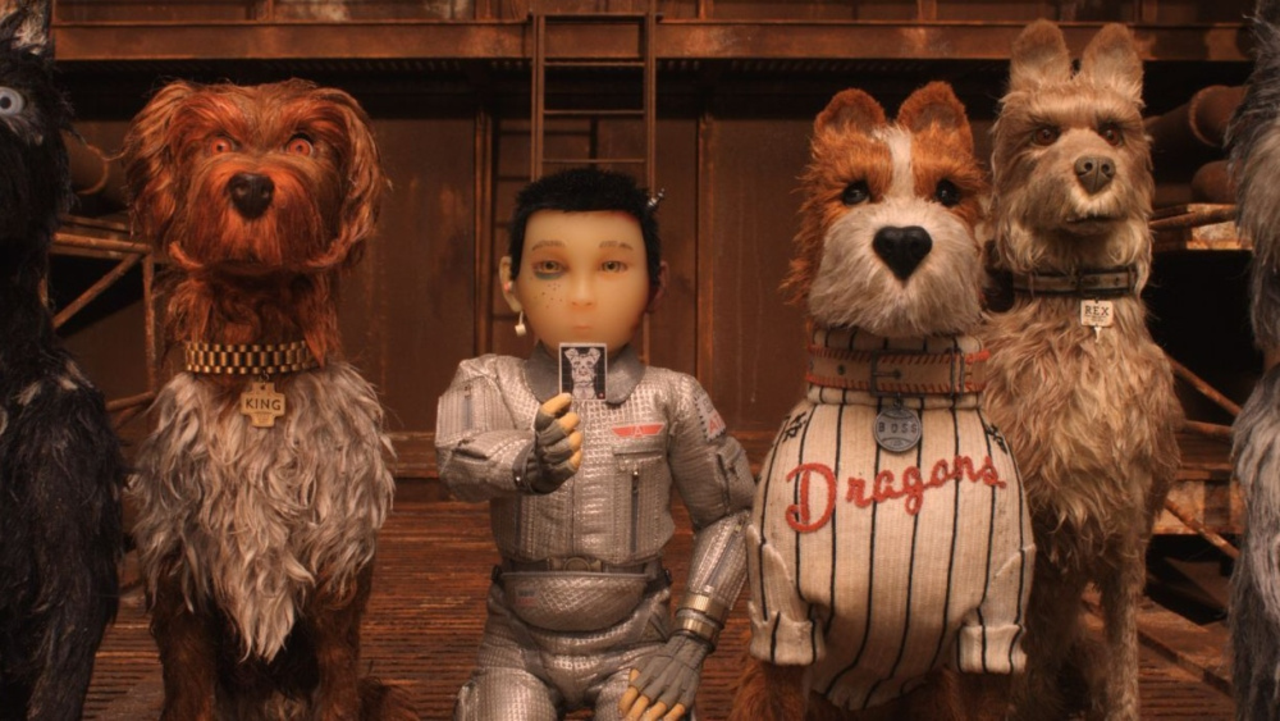Wes Anderson, director of Isle of Dogs, is perhaps best known for his quirky, idiosyncratic films, most of which deal with loveable outcasts making their way (somewhat clumsily yet aided by luck) through some sort of caper. In this regard, Isle of Dogs is no different. In near future Japan, a dog flu outbreak prompts a mayor with ulterior motives to declare an indefinite quarantine of all dogs. Our canine protagonists are sent to “trash island” to live out their days in squalor.
At this point it’s appropriate to state that although the film is set in Japan, it is not an inherently Japanese story. Yes, we are surrounded at all times with auditory and visual cues that bring to mind now-outdated representations of Japan as an imperial power sterilized by its post-collapse state of being: democracy (or, in the film, a pro-cat/anti-dog oligarchy) is present, but the cultural symbols we are presented with never fail to harken back to Japan’s imperial history. Is this particular stylistic decision reductive insofar as it condenses Japanese culture in the mind of the viewer to a narrowly-defined, socio-political landscape that is, in reality, non-existent? Yes. Is it damning? No.
Although the visuals blend lazy representations of Asia meant for Western consumption with call-backs to the stylistic hallmarks of directors like Akira Kurosawa (static main elements juxtaposed in still frames with constant movement in the background, for example), the film is decidedly Anderson’s in that its pace is quick and to-the-point. Understanding the film as a fable, then, not meant to portray Japanese culture, but rather use it as a backdrop, Isle of Dogs proves to be intensely enjoyable.
Firstly, the animation is captivating and, although stop-motion has a tendency to be associated with kitsch (Wallace and Gromit, anyone?) Anderson uses the format to tell a story through short, uniquely bright instances of plot or character development. Scenes begin by highlighting a visual element (a dinner plate, for example), and unfold in such a way that said element is always in consideration. A microcosmic journey begins and ends in every scene so that with every cut, there is at least some momentary pay-off that furthers our anticipation of the next.
Oddly enough, the film takes place over a longer period of time than most of Anderson’s other work, and is punctuated by exposition through either text or dramatic voice-over. Although the story itself is riddled with side-bars which give us some insight into the personal intricacies of many characters (dog and peoplekind alike) the central plot, which focuses on a young boy’s quest to reunite with his dog, simmers throughout the film with a vibrancy that will no doubt have many viewers grinning in spite of themselves.
In the end, the crux of Isle of Dogs is as universal as the bond between two friends, and while the main plot could be summarized in a five-page children’s book, the magic of the film lies in its ability to enrapture its audience, and command their attention in a fashion which few recent major blockbusters have been able to achieve.
As major Hollywood producers scramble (and, in the case of some, fail) to attract viewers to the big screen, Isle of Dogs stands out as a film that successfully brought viewers out in droves by promising (and delivering) two simple things: an interesting premise, and a follow-through which is fun from the first second to the last.


